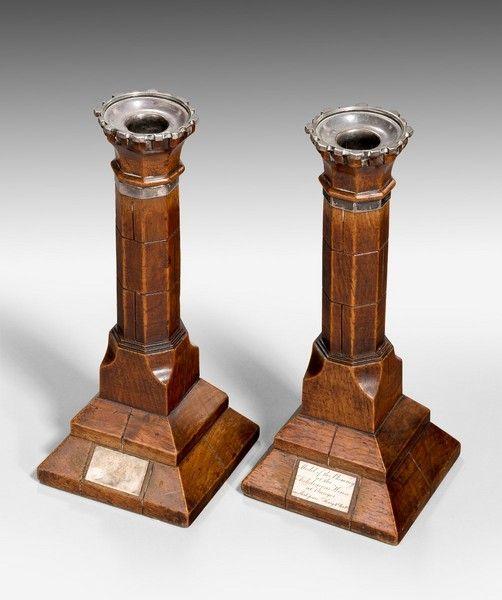

"Walnut, with silverplate. Each with an unidentified, probably Welsh and now lost, coat of arms, the impalement is either Heaton or Eaton of Plas Heaton in Co. Denbigh. The motto reads ‘GWNA DDA YN DY GENEDI’. One candlestick has a plaque to the reverse which is inscribed: ‘Model of the Chimney / at the / Archdeacon’s House, / at Bangor / see Shakespeare Henry 4th Act 3rd’; the second candlestick has a blank plaque.
Although Shakespeare gives no location for the action in Act III, Scene I of Henry IV, according to Holinshed’s ‘Chronicles’ (1577), a meeting between Hotspur and Glendower did take place at the Archdeacon’s House at Bangor (see W.G. Boswell-Stone, Shakespeare’s Holinshed (London, 1907), p.137). The present, twentieth-century Archdeacon’s house is in a different location to its predecessor, but a chimney from the old Tudor house has been reused on a later building, constructed on the original site. This surviving element has the same form as the present candlesticks.
The Cathedral at Bangor is thought to be the oldest in Britain to remain in continuous use for religious purposes. Built in the twelfth century, in 1402 it was severely damaged by Owen Glendower’s followers. It was not until the sixteenth century that it was largely rebuilt and again, following a lengthy period of neglect, the Cathedral was extensively restored from 1868 by Sir Gilbert Scott (1811-78)."